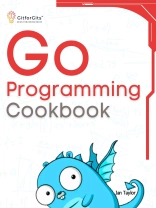The Go Programming Cookbook ensures Go programmers may confidently and effectively navigate the complex software development landscape. Both newcomers to the world of Go programming and seasoned professionals looking to sharpen their skills will find something of interest in this carefully written book.
This cookbook covers a wide range of topics, from the basics of Go syntax and core ideas to more advanced subjects like concurrency, networking, and microservices design. Building a Go development environment, learning the fundamentals of Go constructs, and mastering the art of Go Module dependency management are all covered in the first few chapters, which prepare readers for what’s to come. To guarantee that readers can construct strong and maintainable programs, the next sections cover error handling, unit testing, and database interfaces. The book really comes into its own when it comes to its in-depth examination of network programming; it covers topics like building HTTP clients, implementing FTP and SSH clients, and using Web Sockets for real-time communication.
To prepare developers to create safe, networked applications in a world where everything is always connected, it teaches them how to establish secure TLS/SSL communications, which is a fundamental component of security. In addition to providing practical solutions, the recipes educate readers on the concurrency model and design principles of Go, which helps them build an intuitive understanding of high-performance software development.
Key Learnings- Get a solid grounding in programming by learning the syntax and concepts of Go.
- Explore concurrency with Goroutines and Channels to maximize Go’s possibilities.
- Effortlessly handle intricate network programming jobs involving Web Sockets and HTTP clients.
- Learn TLS/SSL inside and out to make your applications secure for transmitted sensitive information.
- Effectively manage data by integrating with SQL and No SQL databases.
- Use Go Modules to have easier dependency management and build reproducibility.
- Make your Go code clean and easy to maintain by following design patterns and other best practices.
- Get the most out of your system by learning about memory management, benchmarking, and profiling.
- Create web servers and microservices from the ground up that are scalable and perform exceptionally well.
- Become an expert Go problem solver by learning practical answers to real-world issues.
Table of Content












